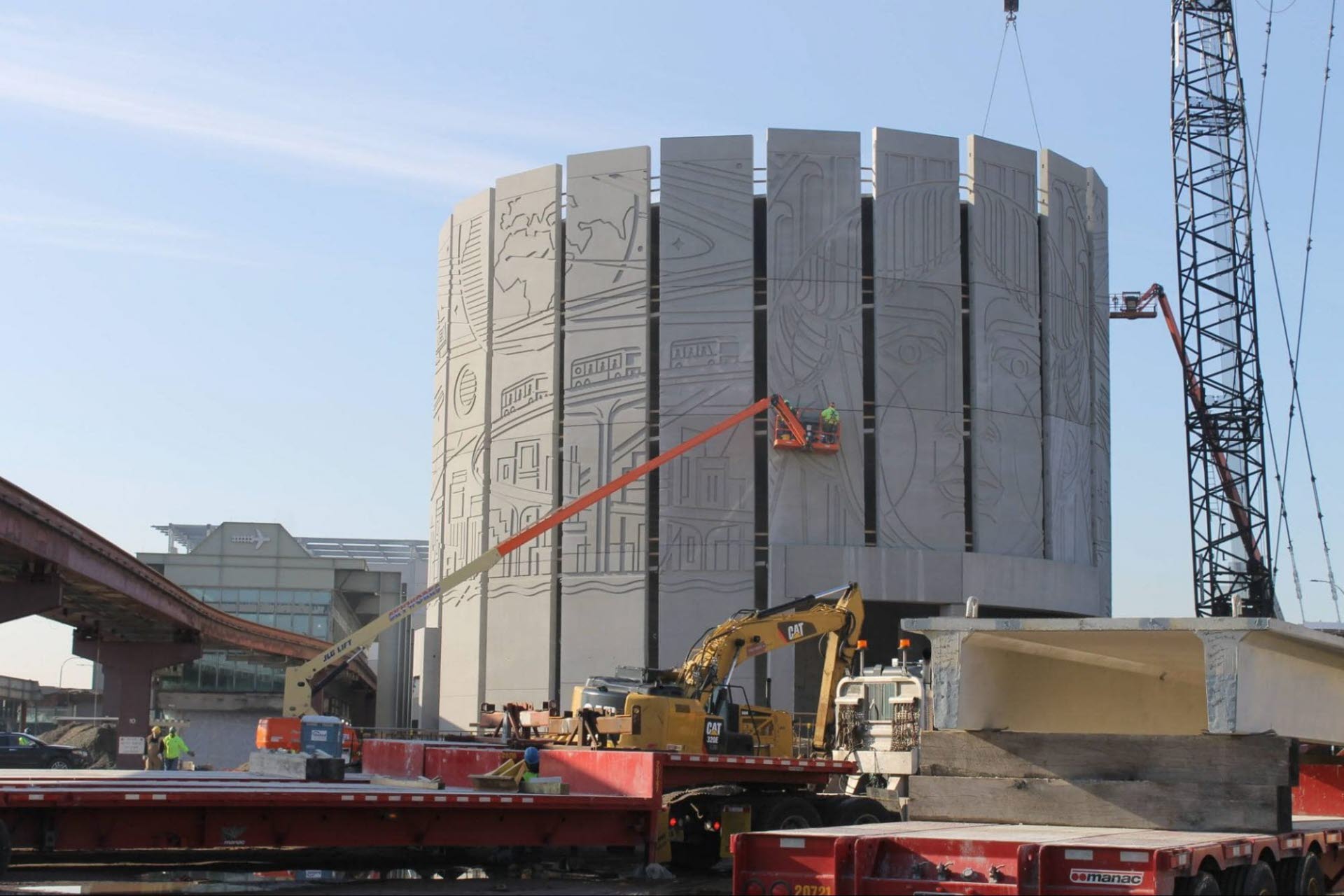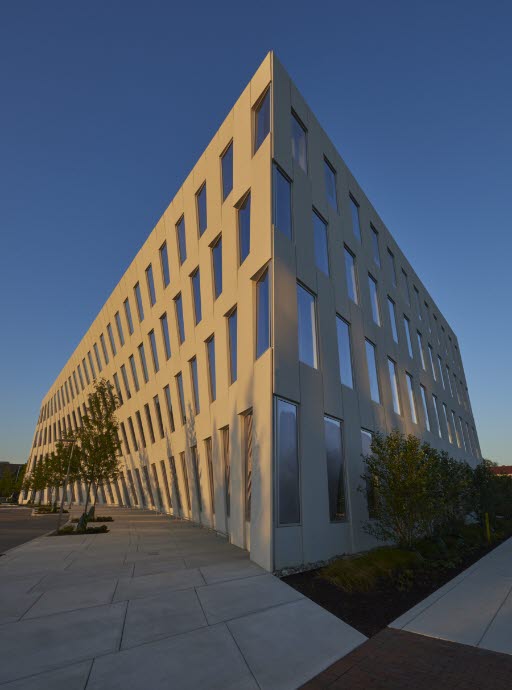What is An Environmental Product Declaration and How Does It Affect Your Building Project?

The construction industry is constantly evolving, and in recent years there has been an intentional response to building more sustainably. More often than not, architects, contractors, and even clients are looking to reduce their carbon footprint with environmentally friendly building practices.
There are times when it’s hard to determine the facts. This is why third-party documentation is crucial to make informed decisions. In this blog, we’ll answer the question of what is an environmental product declaration, and outline the benefits and some limitations of these reports.
Defining an Environmental Product Declaration
Before we dive into the details of an environmental product declaration, let’s define it. If you don’t consistently work in the construction or manufacturing industry, you may not be familiar with this documentation.
Environmental product declarations, or EPDs are international systems that manufacturers and service providers submit their products or services to. Essentially, an EPD highlights the full picture of a product or service’s environmental performance. So you’ll be able to read data that outlines the good and bad of a product or service's full life cycle.
These reports are provided by a third-party corporation so the findings are more transparent and analytical. The EPD system supports environmentally friendly products and services that maintain these standards throughout their entire life cycle.
Defining a Life Cycle Assessment (LCA)
A key factor of an EPD report is the Life Cycle Assessment or LCA. This evaluation goes through each phase of a building’s life cycle, including procurement, construction, operation, and decommissioning. The LCA will analyze and report on how much energy is used within each of these phases.
These findings are especially useful for architects and designers because they can provide fundamental guidelines on how to design and build more sustainably. The Life Cycle Assessment can also confirm your decisions with scientific facts.

EPD Types
There are four different EPD types, which categorize the relationship between the number of products and manufacturers. High Concrete Group falls under Multiple Products.
- Single-Company, Single-Product. This is the most common EPD type, it involves a single product from a single manufacturer.
- Product Not Yet on the Market. If you already have an EPD for a similar product, you can get an EPD for a product that’s not available to the general market yet.
- Multiple Products. Products that are made by the same manufacturer and are similar in nature may fall under this EPD type.
- Sector or Industry Average. A sector EPD is created by an industry association and can produce an average of multiple products in different companies. These products need to be in a clearly defined sector and geographic area.
EPD Performance Indicators
You may be asking, how are projects “graded” or assessed? There are seven different “potentials” that help determine the environmental impact of a project.
- Global Warming. Records all the CO2 and greenhouse gas emissions during the production process as well as the use of the final product.
- Acidification. Analyzes the amount of acidic gases in the product that may react with water in the atmosphere and potentially cause damage to the ecosystem.
- Eutrophication. Measures the levels of nitrate or phosphates in water used during your construction and with the final product.
- Photochemical Ozone Creation. Records the amount of volatile organic compounds (VOCs) and nitrogen oxides (NOx) used in the production and final structure.
- Ozone Depletion. Notes the amount of ozone-depleting gases incorporated into the entirety of your building’s lifecycle.
- Abiotic Depletion. Accounts for the amount of non-renewable resources your project uses, including minerals, metals, and fossil fuels.
- Water Deprivation. This analysis depends on the water availability and demand in the project’s area. If the project’s water usage exceeds or consumes a large portion of the availability, the project will have some level of water deprivation.
Because of how precast concrete panels are made, the process reduces the amount of waste and water used. The controlled facility allows our team to streamline each step and make intentional decisions to maintain high sustainability.
How are EPDs and LEED Certifications Similar?
If you’ve worked with sustainable materials, like precast concrete, you may have been awarded a LEED certification. These certifications identify structures that meet certain environmental standards and promote varying degrees of sustainable practices.
The U.S. Green Building Council works alongside the International EPD System to support green building practices and create a healthy future for the environment and societies. They complement each other to provide a comprehensive understanding of the sustainability and environmental impact of a project or structure.
Both of these standards are verified by a third party, so it’s a more trusted and credible confirmation of a product or service. There are comprehensive standards and criteria that structures must meet in order to be awarded an environmental certification.
Why are EPDs Important to You?
There are multiple benefits of product declaration and environmental certifications, which we’ll outline below. These benefits are represented in the initial design phase, the production of your structure, and the lasting effects once your building is in use.
#1. Meet Sustainability Certifications
Using a building material that meets sustainability objectives sets a precedent for years to come. Almost all companies have some sort of sustainability objectives and are working toward reducing their carbon footprint and ensuring a positive environmental impact.
As individuals and companies working alongside various industries, it’s crucial you stay competitive as the market demand for sustainable practices increases. Companies have also learned that by increasing investment in sustainability, there is also an increase in long-term financial benefits.
High Concrete Group has been awarded LEED certifications for structures across multiple industries. As a building material, precast concrete is a sustainable material that embodies the initiatives that the EPD and the Green Building Council outline.
#2. Make Informed Decisions About Your Project
When a company has an EPD associated with them, you’re getting the full picture. Unlike a company’s website, the content isn’t trying to sell the materials to you. They’re providing a third-party verified representation of a product or service’s environmental impact and performance.
The environmental product declaration helps builders, architects, and contractors mitigate risk throughout the entire project lifecycle. A full picture of the product or service gives you an idea of the repercussions of your decisions.
As you’re making decisions about your building project, you can have a sense of how the public will perceive the structure, the environmental impact it has, and if there’s a risk of contributing to resource scarcity.
Because of this declaration, your team can make informed decisions about what materials to use, how to reach sustainability goals, and how your project will make a positive impact. Your team can better plan and understand the long-term success and reputation of your structure.

1200 Intrepid
- Awarded PCI LEED Gold Best Office Building.
- The facade is 30% more efficient than the baseline ASHRAE assembly.
- Precast panels were made with local raw materials and recycled materials, ultimately minimizing greenhouse gas emissions.
#3. Maintain a High Reputation with Climate-Conscious Decisions
As we alluded to in the previous point, the reputation of your structure, and ultimately your company’s, depends on the type of building materials used and the decisions you make. More and more consumers are looking to support climate-conscious businesses.
This reputation will be sought out by potential customers but also by potential workforce. Green buildings are known to increase employee satisfaction and retention. You have the opportunity to positively impact those working for you and the communities interacting with you.
The production of precast concrete is very sustainable because it can incorporate recycled materials, minimize waste, and use renewable resources. But the positive effects go beyond production.
Precast panels have high thermal efficiency and continuous insulation, so minimal energy is released throughout the building’s lifespan. This provides great environmental benefits to you as well as cost-effective advantages when it comes to heating and cooling the building.
Limitations to Environmental Product Declarations
We’ve answered, what is an environmental product declaration and outlined its benefits, but there are some limitations. These reports are a great resource and standard best practice for architects and those working in the construction industry. In order to get the most out of these analyses and use the information effectively, be aware of the following limitations.
- An EPD doesn’t account for social impact. While the documentation does highlight the environmental impact, it doesn’t outline the social impacts. This could include labor conditions, working environments, or human rights.
However, as of November 2023, there has been an introduction of reports that verify social sustainability performances. It is a pilot project but is a report based on a product or service social lifecycle assessment. - Information may be generic or an average analysis. Specifically for sector EDPs, the information provided is an average across similar products, but may not get into specifics about each manufacturer.
- An EPD may not be up to date with technologies. Innovations in the construction industry are ever-evolving, and EPD best practices and standards may not be able to keep up with these. Because of this, the documentation may not be an accurate representation of current industry practices.
Be Confident In Your Construction Decisions and Build With Environmental Product Declaration Standards.

